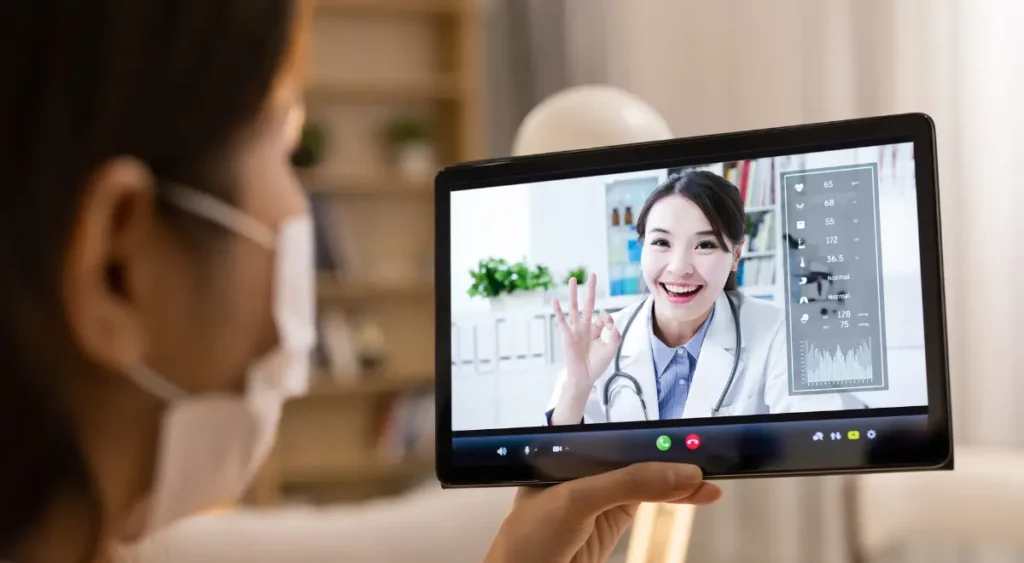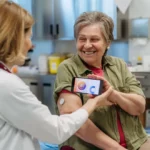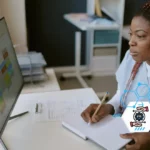Key Remote Patient Monitoring Statistics Every Practice Should Know

Ever since its introduction in the healthcare systems, Remote Patient Monitoring (RPM) has undergone significant transformation. It not only improved the way patients and providers communicate outside of a clinical setting but also encouraged patient engagement and improved health outcomes. The adoption of RPM and other healthcare technologies has helped healthcare providers in boosting patient interactions, reimbursements, and growth over the years.
Before you implement an RPM system into your healthcare practice, look at the RPM trends and statistics from recent years:
- Remote Patient Monitoring Is Accelerating: With millions of providers benefitting from remote patient monitoring systems and devices, the number of patients favoring RPM has risen to 30 million in 2024, up from 23 million in 2020. This number is expected to reach an estimated 70.6 million by the end of 2025 in the United States alone. The RPM trends indicate a significant growth in popularity of remote care systems, including:
-
- Global RPM market growth rate to reach 30.7%.
- Predicted RPM value to rise nearly $189 billion by 2028.
- Up to $500 million investment in RPM programs by 2030.
- RPM compound annual growth rate (CAGR) of about 13.5%.
- Remote Patient Monitoring Delivers High Patient Engagement: By empowering the patients to self-manage and report their health vitals, remote patient monitoring encourages better patient engagement and outcomes. A recently conducted study by Mayo Clinic predicted that RPM devices and platform can:
-
- Improve patient engagement levels up to 80%.
- Boost patient compliance with care plans slightly over 70%.
- Remote Patient Monitoring Increases Patient Satisfaction Rate: As remote patient monitoring allows better monitoring of patients from the comfort of their homes using RPM devices and platforms, patient convenience and satisfaction rate increased by more than 90%. This trend indicates that people are very likely to embrace medical-grade wearable devices and cellular medical devices that can collect data in real time and assist their physicians in making informed choices.
-
- RPM helps achieve satisfaction rates of about 90% in chronic patients.
- 38% of healthcare providers implementing RPM, reported fewer hospital admissions.
- As per the University of Pittsburgh Medical Center, RPM devices cut hospital readmissions by 76%.
- The 30-day mortality rate for high-risk RPM patients was only 0.4%.
- More than 80% of people in the United States are in favor of remote patient monitoring.
- RPM provides control over personal health by 37%.
- RPM delivers up to 36% greater clinical accuracy.
- Remote Patient Monitoring Promises Enhanced Health Outcomes: The reason why more providers are engaging with RPM platforms is its ability to deliver better health outcomes, without compromising with the quality of care provided. Not only this, RPM ensures strong patient retention rates and improved clinical results.
-
- RPM can reduce hospitalizations by up to 25% for chronically ill patients.
- RPM can increase medication adherence by about 15% to 20% with regular monitoring.
- More than 94% of patient responders were satisfied with RPM outcomes.
- RPM programs help deliver 90% better outcomes than in-clinic visits.
- As per Journal of Clinical Hypertension, regular monitoring can lead to a drop of 10 mm Hg in systolic BP.
- Remote Patient Monitoring Ensures Savings For Providers and Patients: By implementing an accurate RPM program and filing the right deductions, expenses, and reimbursement, both patients and healthcare providers can save thousands of dollars in overall healthcare costs.
-
- 17% healthcare providers reported lower costs and medical expenses.
- 75% rural and urban doctors are actively using remote patient monitoring systems.
- As per the American Journal of Managed Care, RPM can help providers save $1,000 per patient annually in healthcare costs.
- RPM billing codes ensure 30% increase in reimbursement and improves the financial viability.
- Remote Patient Monitoring Builds The Foundation Of Remote Healthcare: With the growing prominence of remote healthcare models among patients and providers, RPM plays a significant role in transforming care coordination. Many physicians and hospitals are already delivering patient services using a remote patient monitoring platform, like HealthArc that allows easy patient-provider communication.
-
- As per MSI International, close to 90% of patients had already used RPM.
- 80% of RPM users are chronic patients suffering from diabetes, cardiovascular, and respiratory disorders.
- 40% of younger adults are more likely to use RPM than favoring traditional in-person visits.
- According to a study by Accenture, 60% of patients are willing to use RPM technology for chronic conditions.
- A survey by the American Medical Association reported 53% of physicians are using RPM technologies to monitor chronic patients.
- Majority Providers Are Investing in RPM Devices: Though not all practices are currently relying on remote care technology, those using are highly satisfied with it. Physicians are not only using RPM systems but investing in remote patient monitoring devices to ensure optimal outcomes and make timely intervention, whenever necessary.
-
- As per Spyglass Consulting Group, 90% of healthcare providers are investing in RPM technology.
- A report from Statista states over 440 million wearable devices will be in use by 2025.
- Over 75% of RPM solutions are integrated with smartphone apps.
Table of Contents
ToggleBarriers & Challenges
Though remote patient monitoring has gained a worldwide popularity in a short span of time, still many healthcare providers are reluctant to implement an RPM program into their healthcare practice. The reasons concerning most of them are privacy issues and lack of understanding how digital healthcare platforms work.
A HIMSS survey indicated that 57% of healthcare providers feel it’s hard for both patients and providers to implement an RPM system, especially majority of aged patients are not very good at using smartphones and Internet.
Approximately 22% of patients expressed concerns about the privacy of their profiles and vitals data over a cloud healthcare platform.
What Are The Possible Future RPM Statistics and Trends?
As per the research conducted by Insider Intelligence, Strategic Market Research, and MarketsandMarkets Research, following are the RPM trends likely to be witnessed in the future:
- By year 2025, more than 26% Americans will be using RPM technology.
- By year 2027, RPM market is projected to increase by 128%.
- By year 2027, the total number of patients using RPM will reach 115.5 million globally.
- By year 2028, global value of RPM market will reach about $42 billion.
- By year 2028, the RPM Compound Annual Growth Rate (CAGR) will grow up to 20%.
- By year 2029, 65% of providers will plan to increase their use of RPM.
- By year 2030, nearly 80-90% outpatient visits will become virtualized.
- By year 2030, about 40% of practices will incorporate artificial intelligence into RPM solutions.
Elevate Your Remote Patient Monitoring Abilities with HealthArc
HealthArc’s all-in-one advanced care management platform helps practices connect to their patients, optimize reimbursement and minimize documentation with increased clinical efficiency. Our HIPAA compliant software ensures you are adhering to the policies and organized for accurate billing.
Our RPM software offers seamless integration with all leading EHRs through HL7 and FHIR capabilities and replaces catch-all documents with editable care plan templates featuring checkboxes, allowing practitioners to quickly choose the most relevant goals, barriers (SDOH), symptoms, allergies, medication, preventive care, self-management goals for each patient. Healthcare providers can conveniently communicate with patients via audio, video calls, SMS.
In addition, providers can make timely interventions, formulate care plans, re-fill prescriptions, review diagnostics and make referrals using HealthArc. Practices can also access staff productivity, billing reports and various other reports.
Schedule a free demo today to find out how our digital platform works and how it can help enhance care and revenue for your practice.
Frequently Asked Questions (FAQs)
In 2024, 30 million people in the U.S. used RPM, up from 23 million in 2020. The number is likely to grow to 70.6 million by the end of 2025.
The global RPM market is expected to grow at a compound annual growth rate (CAGR) of about 13.5%, reaching nearly $189 billion by 2028.
Research indicates that RPM can enhance patient engagement by as much as 80% and adherence to care plans by more than 70%.
More than 90 percent of respondents claim that they are more satisfied with RPM because of the ability to view the state of their health at home and less inpatient utilization.
The statistics provided by UPMC show that RPM can reduce the length of stay across chronic patients up to 25 percent and decrease the readmission rate by 76 percent.
With proper billing plans, RPM programs are capable of helping the providers to achieve about 1,000 dollars per patient in savings in a year and an extra reimbursement rate of approximately 30%.
RPM is widely used in managing chronic illnesses like diabetes and cardiovascular and pulmonary diseases, where it enables a timely response and enhanced clinical results.
In fact, about 90 percent of medical professionals are putting their money in RPM technology. By 2025, projections indicate that the global population will use more than 440,700,000 wearable RPM devices.
Resources
Most Recent Blogs
Categories
Related Blog
- October 23, 2025 | Read Time: 12 mins
How RPM Devices Improve Hypertension and Diabetes Outcomes in Medicare Populations
Remote patient monitoring (RPM) is transforming chronic care for Medicare beneficiaries. CMS...
Learn More- August 25, 2025 | Read Time: 13 mins
How Can “One Big Beautiful Bill” Boost RPM Programs by $50B?
The “One Big Beautiful Bill,” signed July 4, 2025, directs $50B over...
Learn More- August 22, 2025 | Read Time: 17 mins
HealthArc Platform vs RPM Software Solutions
Is your healthcare organization trying to pick a remote patient monitoring solution?...
Learn More


